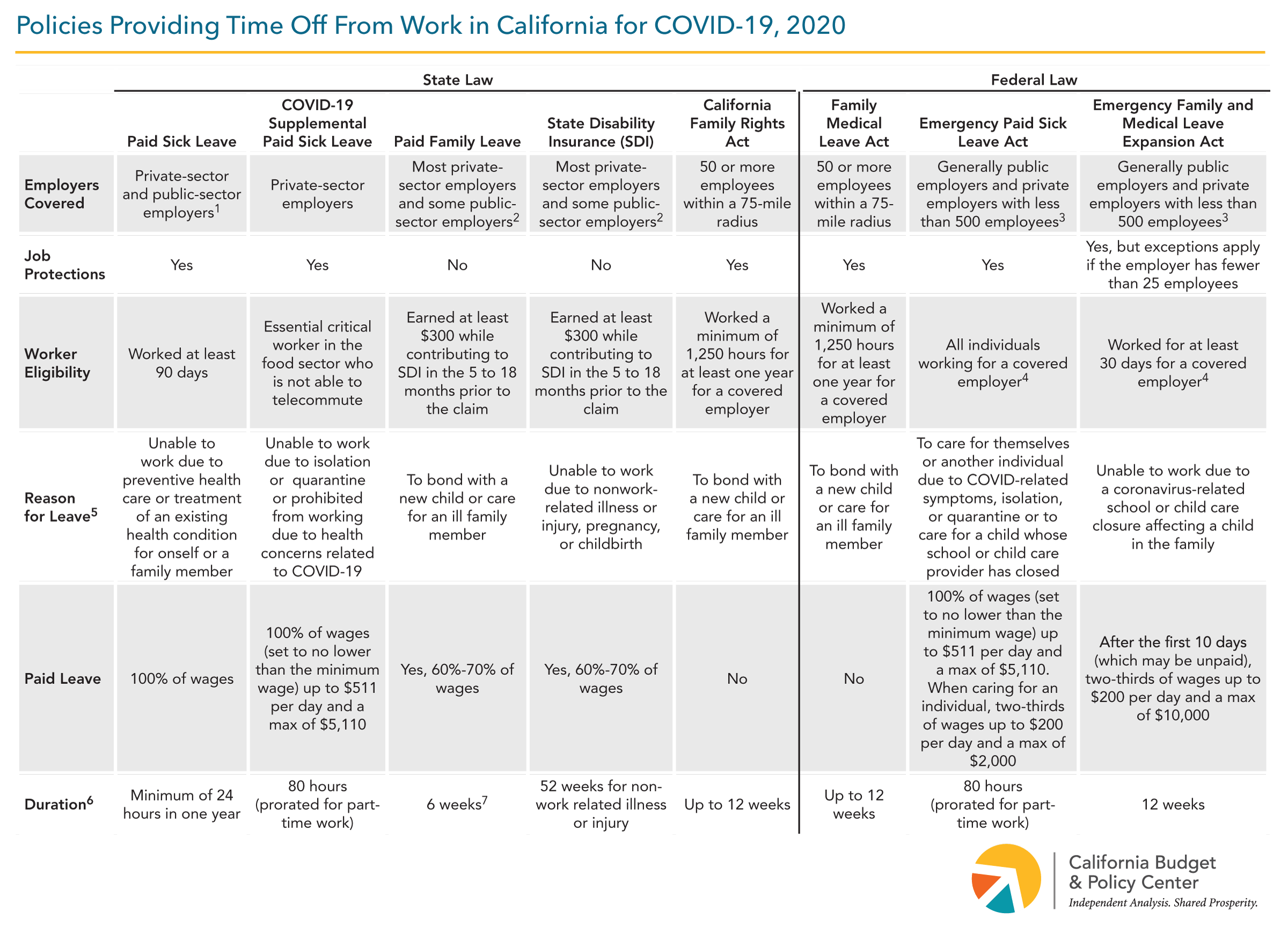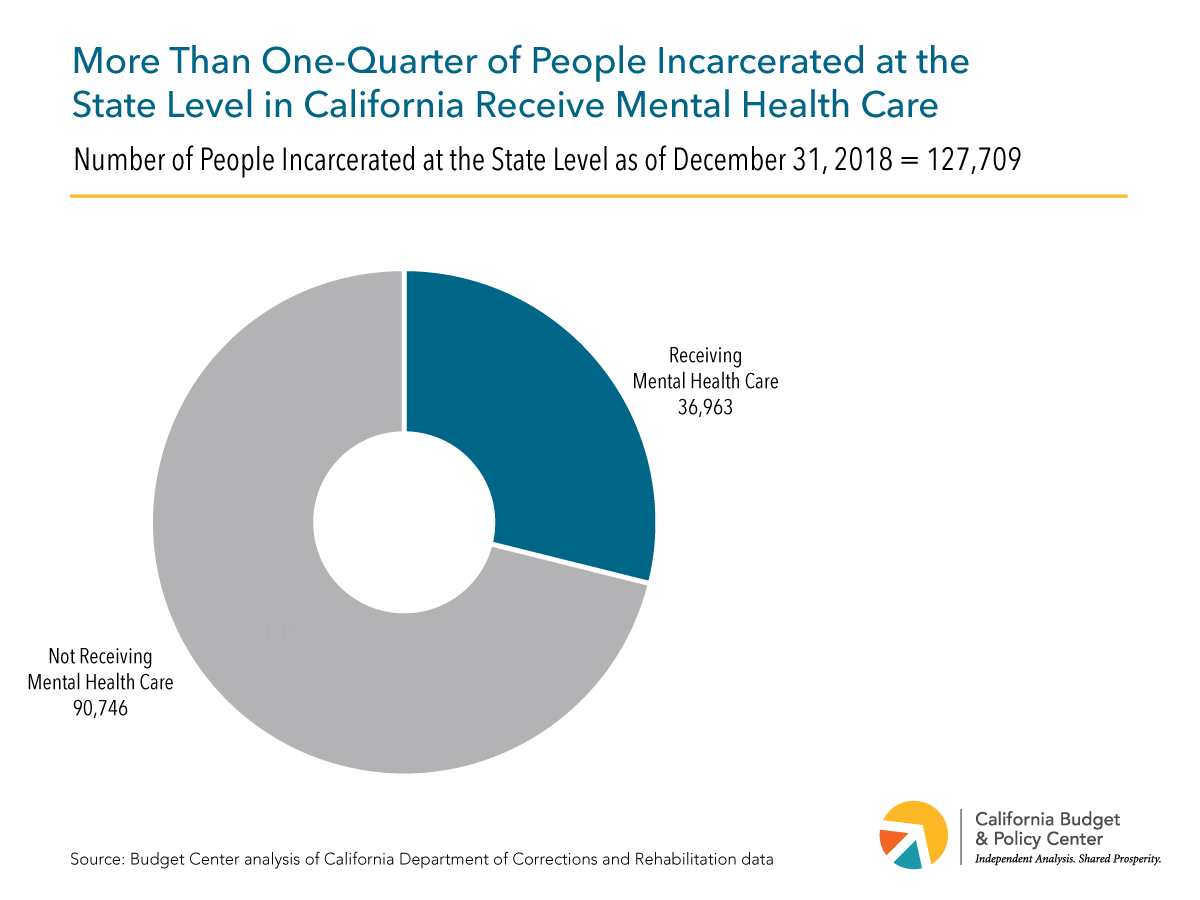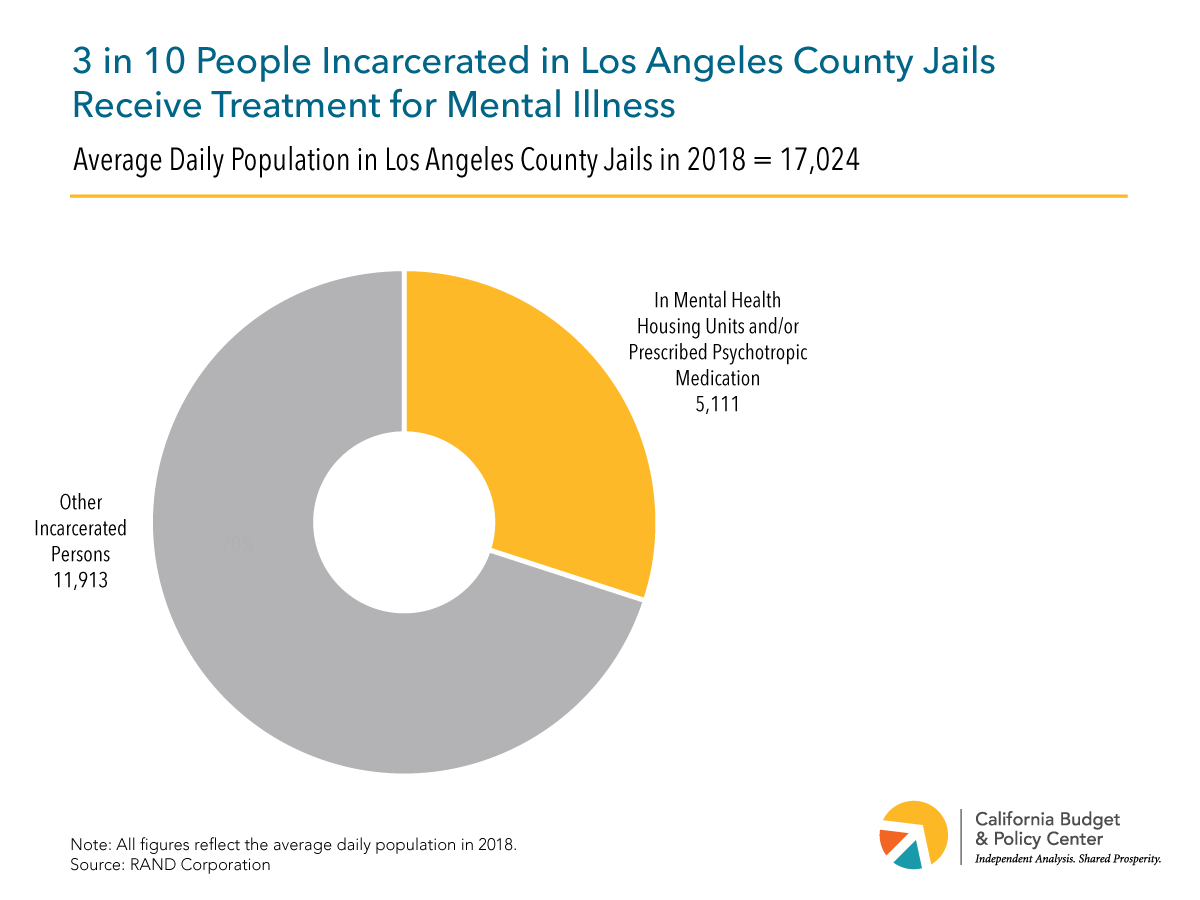On a given night, more than 150,000 Californians are homeless. These individuals face significant risk of exposure to COVID-19 and serious barriers to following stay home orders to limit the spread of infection. Due to older ages and high rates of physical health conditions, they are also at high risk of severe complications or even death from the virus. Black Californians are greatly overrepresented among homeless individuals, making their health especially endangered by COVID-19. Policymakers should make sure the urgent housing and health needs of Californians who are homeless are met, to protect their health and the broader public health and to address racial health disparities exacerbated by this pandemic.

- Nearly 3 in 4 Californians experiencing homelessness are unsheltered– living on the street, in cars, or in other places not meant for habitation. Lack of proper housing makes it impossible for these individuals to follow stay home orders or even practice basic hygiene, such as washing their hands.
- Social distancing and self-quarantine are also a challenge for Californians staying in emergency shelters and transitional housing, due to shared sleeping, eating, bathroom, and living spaces.
- The lack of housing and inability to consistently follow public health recommendations puts Californians who are homeless at greater risk of contracting COVID-19. This also hinders statewide efforts to stop the virus from spreading.
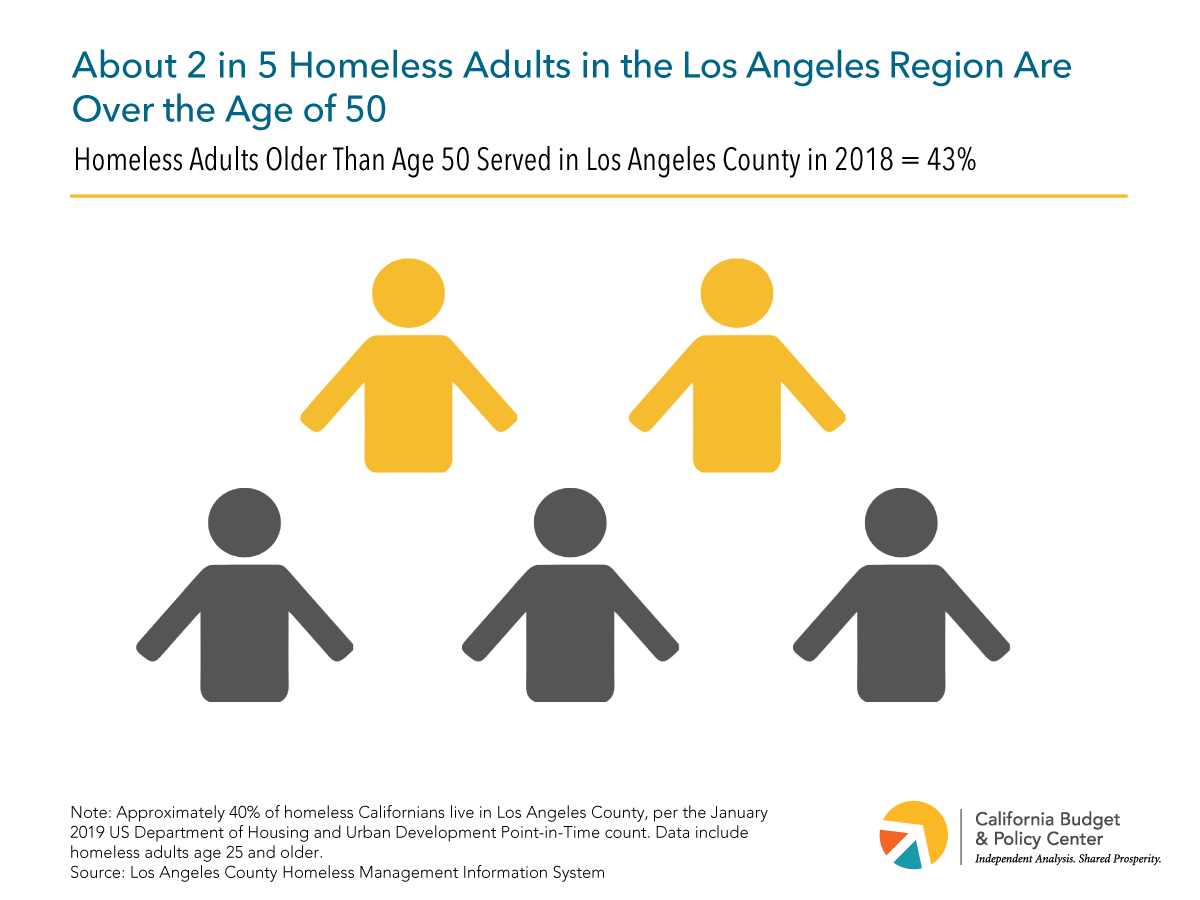
- Older adults are at high risk of developing severe health complications from COVID-19. According to the US Centers for Disease Control and Prevention (CDC), adults age 50 and over have the highest rate of hospitalization due to COVID-19 — and those age 55 and older accounted for 92% of provisional COVID-19 deaths as of April 21, 2020.
- Even prior to the pandemic, the aging of the homeless population meant that older adults are now – and will continue to increasingly be – a large portion of Californians experiencing homelessness. In Los Angeles County, about 2 in 5 homeless adults are older than 50.
- Further, homeless individuals demonstrate rates of illnesses and geriatric conditions on par with or higher than adults with stable housing who are 20 years older, increasing their risk of complications from COVID-19.
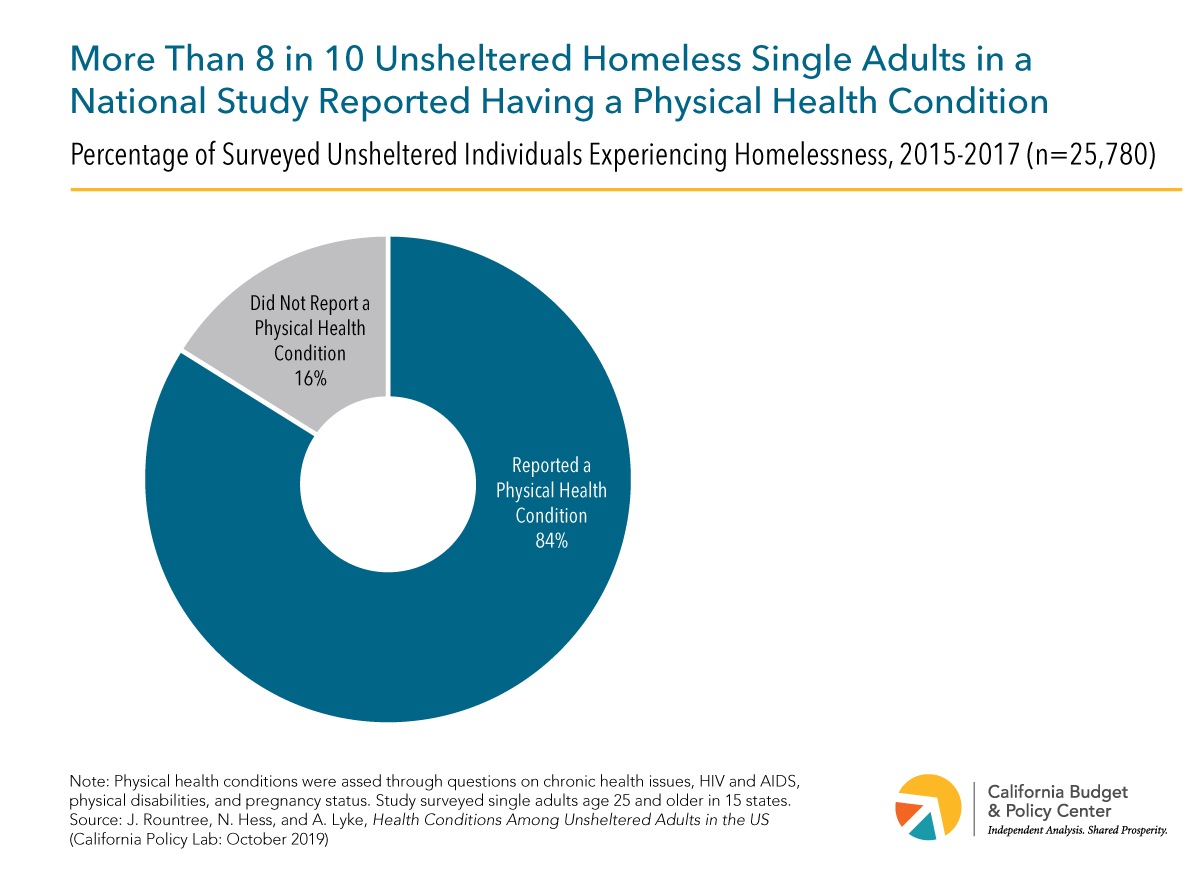
- People with chronic health conditions also tend to have worse COVID-19 outcomes. A preliminary study by the CDC found that adults with COVID-19 who had at least one underlying health condition or risk factor were significantly more likely to require hospitalization or ICU admission, compared to those who did not.
- In addition, experiencing homelessness exacerbates existing health conditions and can lead to new ones, such as chronic illnesses and infectious and communicable diseases. In a national study of homeless single adults, more than 8 in 10 unsheltered individuals (84%) reported having at least one physical health condition.

- Racial disparities linked to current and past discriminatory policies and practices are startlingly apparent in Black Californians’ overrepresentation both within the homeless population and among severe health outcomes and deaths related to COVID-19.
- While Black Californians only comprise 6% of the state population, nearly 1 in 3 individuals experiencing homelessness are Black, and therefore face high risk of COVID-19 exposure and significant barriers to preventing and addressing infection.
- Black Californians accounted for 12% of COVID-19 related deaths statewide as of April 19, 2020 — double their share of the state population. In Los Angeles County, where 1 in 11 residents (9%) are Black, they have accounted for 1 in 6 deaths (16%) due to COVID-19 as of April 18, 2020.
Federal and state policymakers have taken initial steps to address the needs of Californians experiencing homelessness during the COVID-19 crisis, such as providing support to house some individuals in hotels and allocating funds to local jurisdictions to address local homeless services needs. This support for individuals without a permanent home will be needed as long as the pandemic lasts. It is also critical to ensure that Californians at high risk of severe COVID-19 health outcomes – including older adults and individuals with chronic health conditions – do not fall into homelessness. Strong interventions are also important to avoid further exacerbating the disproportionate burdens of homelessness and COVID-19 among Black Californians. Given the high risk and devastating consequences for both individuals’ health and broader public health efforts, policymakers should prioritize the urgent COVID-19 health and housing needs of homeless Californians, while taking steps to address the state’s long-term homelessness challenges and racial health disparities.



